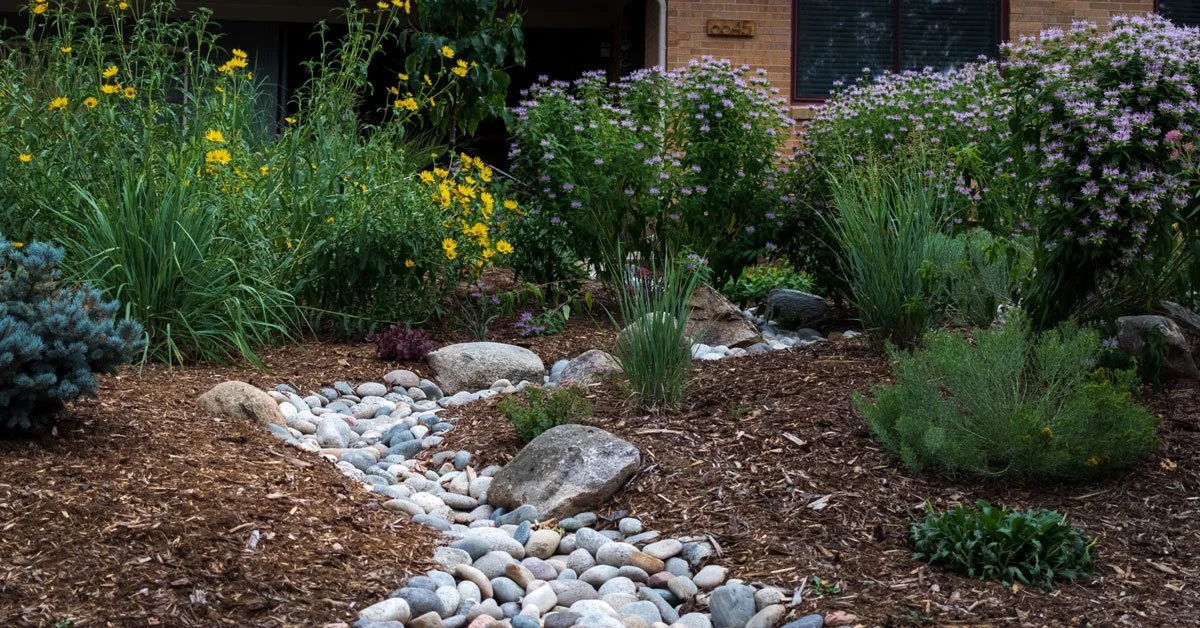
Water Wise Landscaping and Xeriscaping Resources
Water-wise landscaping, also known as xeriscaping, is a thoughtful approach to creating outdoor spaces that are functional, attractive, and easy to maintain within their natural surroundings. By prioritizing the use of drought-tolerant plants, efficient irrigation systems, and moisture-retaining techniques like mulching, water-wise landscapes not only blend seamlessly with their environment but also significantly conserve water.
-
Xeriscaping is the practice of designing landscapes to reduce or eliminate the need for irrigation. This means that any plants planted need little or no water beyond what the climate provides.
Xeriscaping is becoming more popular in dry climates due to prolonged drought causing water to become a more limited resource.
The key aspect of xeriscaping is using vegetation that is appropriate for the climate it is planted in. This often means replacing grassy lawns with soil, rocks, mulch, and drought tolerant native plant species.
-
Xeriscaping emphasizes using native, drought adapted plants to reduce water usage. Examples of plant species that can be used in the Grand Valley include:
Rabbitbrush
Sagebrush
Lavender
Indian ricegrass
Walking stick cholla
Single leaf ash
-
Rain water collection is the process of collecting, storing, and directing rainwater runoff and using it. Water is directed from roof gutter downspouts usually used for landscaped areas and is then consumed by plants. Typically, rooftop rainwater collection systems are simple, consisting of gutters, downspouts, and storage containers. Inexpensive rainwater storage systems commonly make use of an above ground container such as a barrel or plastic tank with a lid to reduce evaporation and bar access for mosquitos to breed.
In order to safeguard senior holders of Colorado water rights, diverting and storing water is allowed only during times when all water rights in the basin are satisfied.
There are several restrictions that are important to follow in order to use rain barrels in Colorado. Under House Bill 16-1005, rain barrels can only be installed at single-family households and multi-family households with four (4) or fewer units. A maximum of two (2) rain barrels can be used at each household and the combined storage of the 2 rain barrels cannot exceed 110 gallons. Rain barrels can only be used to capture rainwater from rooftop downspouts and the captured rainwater must be used on the same property from which the rainwater was captured, for only outdoor purposes, including to water outdoor lawns, plants and/or gardens. Rain barrel water cannot be used for drinking or other indoor water uses.

Other Xeriscaping and Water Wise Landscaping Resources
City of Grand Junction Water Conservation Program
Drought Tolerant Trees for Colorado Landscapes
Grand Junction Tree and Shrub Guide
Native Shrubs for Colorado Landscapes
Qualified Water Efficient Landscaper (QWEL)
Rain Barrels in Colorado - CSU
Resource Central Garden in a Box Program
State of Colorado Rain Water Collection
Xeriscaping
Xeriscaping in Colorado: A Step by Step Guide

